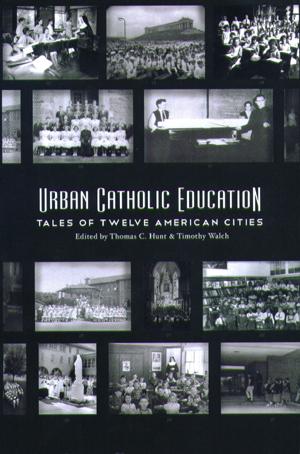
By Barb Arland-Fye
“Urban Catholic Education” Tales of Twelve American Cities,” edited by Thomas C. Hunt & Timothy Walch, Alliance for Catholic Education Press at the University of Notre Dame, 2010.
An editor once said: “Tell me something I don’t know.” It was an invitation to enlighten readers of our newspaper with every story. Scholars Thomas C. Hunt and Timothy Walch clearly follow that advice in a new book they co-edited, “Urban Catholic Education: Tales of Twelve American Cities.”
In this 304-page book they’ve compiled essays on the history of Catholic schools in 12 urban cities throughout the United States. It’s a fascinating read because of the exploration of Catholic schools’ intersections with public school systems, parish life, culture, immigration patterns and Church history. “Urban Catholic Education” provides as much a study of sociology as the evolution of Catholic school education in the 19th and 20th centuries. Some of the “aha” moments for me:
Bishops in the 19th century were alarmed about what they considered to be Protestant proselytizing in public schools and paved the way for secularism in the public schools.
While the Third Plenary Council of Baltimore (1884) mandated construction of parish schools in dioceses across the country, Boston pastors concentrated first on clearing debt on new church buildings. Their counterparts in some dioceses did the exact opposite, building schools and then constructing church buildings. In Chicago, for example, “as pastors soon discovered, elementary schools attracted new families and actually helped to speed up the process of building a permanent church.”
Women religious, who helped pioneer the growth of the Catholic Church, sometimes taught classes as large as 100 students per teacher and worked at poverty-level wages out of a commitment to preserving the faith of immigrant families struggling to make their way in this country. The Sisters shaped generations of Catholic children.
The system for financing and supporting regional Catholic high schools in Cincinnati attracted national attention. The system provided that each parish pay a certain amount for each student from a parish attending one of the regional Catholic high schools.
Though American bishops had long opposed federal aid for education, positive experiences with government economic relief programs in the 1930s and 1940s helped diminish some of their concerns.
Each city’s story — told in chapters — is different and yet shares some common themes. The chapter on St. Louis was perhaps my favorite because of the specific leaders who influenced Catholic education and the efforts of Catholics in that city to come to terms with integration. One vignette tells about the Missouri State Athletic Association, which unknowingly admitted an African American Catholic school into the association and thus sanctioned integrated athletics in the state. Archbishop Joseph Ritter was a powerful advocate of integration, writing a letter that was read one Sunday at all Masses reminding the faithful of “the equality of every soul before almighty God …” The full integration of Catholic schools in St. Louis preceded “Brown vs. the Board of Education” by seven years, the book states.
As the mother of an adult son with a cognitive disability, I was especially heartened to read the story of Msgr. Elmer Behrmann who convinced Archbishop Ritter to provide special education for mentally handicapped students in archdiocesan schools because their needs were not being met elsewhere. The exchange between the two clerics is priceless.
(The book can be purchased from the Alliance for Catholic Education Press at http://acepress.nd.edu and from Amazon.com. List prices are $15 for paperback and $25 for hardcover.)








